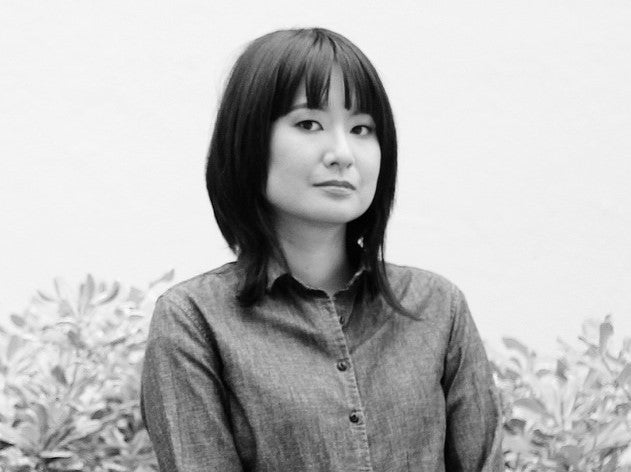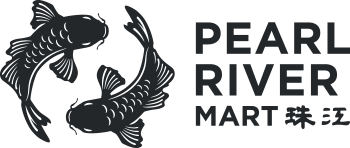
Artist-in-Residence Yumi Sakugawa: We Are Not Bound By Our Narratives
Comic book artist and author Yumi Sakugawa explores the world and its complexities through an astute and singular vision. Through her books, short comic stories (which range from the wittily instructional to the surreal to the just plain fun), and dreamy “one-pagers,” she brings to life through deceptively simple line drawings what it means to be human — the good and the bad, the painful and the joyful, the earthly and the sublime.
We had the chance to speak to the Ignatz Award-nominated artist about how she discovered her calling in comic books, how meditation and mindfulness have informed her art (and her life), and why we shouldn’t be tied to the narratives we tell ourselves.
Let's start with your background. Where did you grow up?
I grew up in Anaheim Hills with my parents and brother. I have the fortune of having a really safe, suburban upbringing, where there were other Asian American communities. There were Japanese and Asian supermarkets to go to. I had quite a lot of Asian American friends and friends from other communities. I also very fortunately had a lot of teachers through school who were encouraging about my creative expression.
I feel fortunate with my parents too because they never prescribed a specific path for me. They never said you must be a doctor or a lawyer or an engineer. They gave me the freedom to draw and to write, to have creative experiences.
Are your parents artistic too?
I once saw a doodle my dad did and it was pretty good! My mom is crafty. She’s an amazing cook and an excellent gardener. She’s very attuned to aesthetics. But neither of them pursued art. No one in my family did. I think there might be latent creative energies, but I didn’t have an artistic family role model.
Some of our artists talk about going through journeys as related to identity (Felicia Liang for instance) and being Asian American. Did you experience something like that?
I definitely went through that, where I felt like I wanted to be considered just a person not necessarily as an Asian person. It wasn’t until college — I went to UCLA which has a strong Asian American community and a large Asian American studies department — that the paradigm was presented to me: the idea that Asian Americans have their own history, their own perspective and worldview.
I had never considered having my own history as an Asian American woman. I sort of saw my Asianness as a hindrance. I just wanted to assimilate. It never occurred to me that I could be actively proud.
Have you always been interested in art and drawing?
I’ve been drawing since I was a toddler. I could just fill notebooks with drawings. I was also really, really shy so it was the perfect activity for a painfully shy kid. I could get lost in my own imaginative world, make up stories, and read books. I was a voracious reader, which sparked my interest and passion in creative writing. As a young person, I definitely had the idea I wanted to do something creative, whether that was a cartoonist, painter, or author.
How did you discover creating comics as a path?
As a kid I thought the only option for me was to do the Sunday funnies. Then when I went to college, graphic novels were starting to become a thing. I went to the Giant Robot store in West Los Angeles (the neighborhood the store is located in is now known as Sawtelle Japantown) and learned about a lot of cartoonists there. Indie comic book artists and those who had self published zines. The idea finally came to me that I can write and draw my own stories.
I read you were part of a theater company at UCLA. Did you perform?
Yes, I was part of Lapu the Coyote that Cares Asian American Theater Company, which was co-founded by Randall Park. Ali Wong was also part of the group as well as other Asian American writers, actors, directors, and producers now pursuing those careers in Hollywood.
I did everything in that group. Improv, acting, directing, and writing my own one-act scenes. I was a producer for the group for two years. As a result, I learned about art on an interdisciplinary level. It wasn’t just about writing and drawing. It was about all the different ways of using creativity.
That was an interesting part of my evolution as an artist. I couldn’t imagine performing again, but in recent years, through my guided meditations and workshops, a performative aspect of my creativity has resurged.
You mentioned being a shy kid — what made you decide to try acting?
In college, I decided to make effort to overcome my shyness and become a more confident person. I had always suspected there was a performer in me but I never gave myself permission to explore that part of myself. It was an evolution on my part. The narratives we hold about ourselves are never airtight. There’s always something valuable and unexpected we’re capable of doing.
How did you first become interested in meditation?
It was starting in college. I was teaching English in Japan, and during that time I fell into a depression. While at UCLA, I had therapy and medication, and support from my friends. In Japan I had none of that. And so I got really depressed.
Serendipitously a colleague of mine introduced me to Eckhart Tolle’s “A New Earth,” a New Age self-help book. It’s about mindfulness and meditation, about being present. That was the opening for me to really throw myself into meditation. That in turn informed my art. I started to make illustrated art about meditation, how to make it more flexible for people. That led to writing two books about it and conducting meditation and mindfulness workshops. That’s become part of my practice — making meditation accessible for others and a part of their day-to-day self-care practice.
Has practicing meditation changed your art in general?
Oh yeah definitely. The narratives are a lot looser. I’m not so concerned about making it work a certain way. I let the work come into being more intuitively and naturally, instead of forcing something to happen.
I love how your comics are like visual poems — were they always like that? Has your style or subject matter evolved over the years?
Definitely. In the beginning, I wanted to emulate classical short stories with conventional narratives. A beginning, middle, and end. But over the years I’ve started approaching the narratives more loosely. Where it’s more like a poem, like you said. A dream vision. Not so much a short story with characters and dialogue, having a conflict and resolution. There’s a lot more looseness.
How do your ideas come to you?
It depends. I feel like there’s never one way an idea comes to me. But I think it’s usually something that I'm working out in my life. For example, I made this short story, “Ikebana,” back in 2015, published by Retrofit Books. It’s about this young art college student who does this performance art piece in her college classroom. At that time, I was really questioning what this art meant to me, how it was relevant for me in a way that was independent of the rules and expectations of the art world and the institution of art education. Making that story was a definition for myself, the art process, why it’s important to me, and why I create art.
My meditation comics are all things that I’m working out for myself. Why it’s important. It’s about unconditional love and self love. Whether the art is about a relationship, a memory, things I’ve read about, that I’ve experienced in other art. Connecting with other people or longing for somebody.
Do you think about the audience during your creation process?
These days I’m a lot more conscious of that connection: what I’m going through and how can this resonate with other people going through the same thing. There’s this awareness that it isn’t just about what I’m going through or what I’m personally most interested in excavating for myself. It’s in tandem with how can this help other people going through the same thing.
Do you believe in inspiration? What do you do to get inspired?
There are things I do every day as a kind of creative hygiene. Every morning I meditate for 20 minutes. This is non-negotiable. It helps me stay mentally and psychically clear. Then I do a practice recommended by Julia Cameron, the author of "The Artist’s Way," called Morning Pages. It’s three pages of stream of consciousness writing.
I also like to draw a card from a divination deck to get inspiration for the day. And walking is a very simple yet effective way of keeping the creative juices flowing, as well as turning the phone off and not going online for extended periods of time. All of those things in addition to the very basic — getting enough sleep, water, and exercise, spending time of friends — I take very seriously.
Is there anything in particular that’s inspiring to you right now? That you would recommend to people as a “must”?
I recently finished a book by Gary Zukav called "The Seat of the Soul." I heard about it on Oprah Winfrey’s SuperSoul Sunday podcast. She wrote the preface along with Maya Angelou. It’s about what it means to live your life from your soul as opposed to your personality, ego, or the drive of getting more money or fame.
I feel like maybe I’m going through a third life crisis. After building a career for myself, publishing books, and living my childhood dream of being an artist, I’m at a crossroads in my life. What is this other life? How do I really want to live as a human being? That book really opened a lot of portals. How can I live a creative life that is consciously contributing to the well-being of people on this planet, on a day to day level? What does it mean to be a good person?
What advice would you have for someone interested in pursuing art?
First of all, meditate 20 minutes every day. [Laughs] No, but seriously, being a creative person has its challenges, its ups and downs. You need a solid foundation, to be able to access being present and going with the flow. Meditation is going to help with that.
The second thing is it’s important to surround yourself with creative friends and people who are similarly interested in what you’re doing, in making work and pursuing a creative path. It’s important to have that creative support group. It makes the whole process less lonely, and you can share resources and information. Seek out like-minded people. Go to events. Participate in whatever it is you’re interested in, whether it’s a short film competition, a reading, or group art show. Get involved where you’re meeting other people.
The third thing is deceptively simple but the hardest: finish your projects and put them out in the world, and keep doing it for the rest of your life. In my case, it was putting out a lot of work on my Tumblr and in zines. That’s how people knew to find me. Literary agents, editors, what have you. The more work you put out, the more connections you’ll make. The more people know how to find you.
FASHION FORECAST will be on view in our TriBeCa mezzanine gallery from September 15 through November 4, 2018. To learn more about Ms. Sakugawa, visit her at her website or on Instagram.
